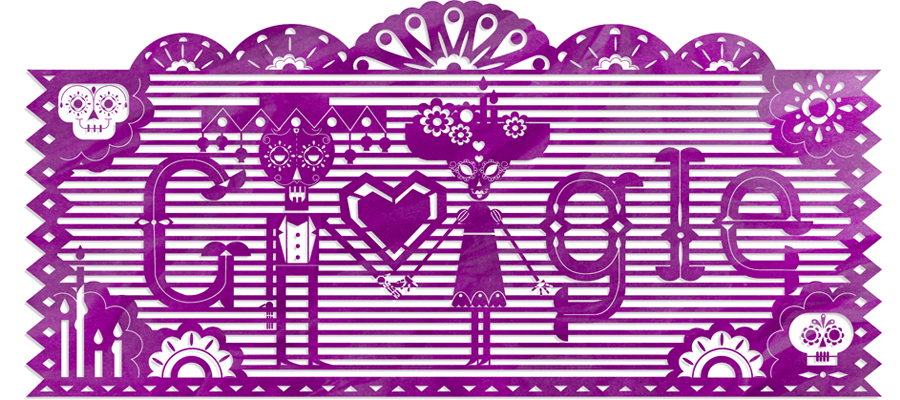Posted 7 years ago
·
Author
All Saints' Day, also known as All Hallows' Day, Hallowmas, Feast of All Saints, or Solemnity of All Saints, is a Christian festival celebrated in honour of all the saints, known and unknown.
11/01 annually.
Yesterday, October 31, was All Hallows’ Eve or Halloween, that is, the evening before the holy ones.
As explained in “Reclaim Halloween as the holy All Hallows’ Eve!,” the word “hallow” is “to make holy or sacred, to sanctify or consecrate, to venerate,” while the word “e’en” means “evening.”
The word “saint” means holy. Halloween, therefore, means Holy Evening or the Evening of the Hallowed or Holy Ones, i.e., the Evening of the Saints.
Great way to get over that sugar crash too



-- Wed Nov 02, 2016 9:53 am --
11/02
The Day of the Dead, which dates back to Pre-Columbian times, honors the mysteries of life and death, through both celebration and reverence. Every year from November 1-2, both Mexicans and people around the world honor their loved ones with offerings or ofrendas displayed on colorful altars decorated with pictures, bright flowers, candles, and their favorite foods and beverages.

-- Fri Nov 11, 2016 11:12 am --
IN ADDITION TO BEING VETERAN'S DAY, NOVEMBER 11TH ALSO BOASTS THIS FANTASTIC PARTY
Also famous outside the region, Gansabhauet is a ritual held on St Martin's Day, 11 November, in Sursee. A dead goose is suspended from the back of its head, and participants (mostly young men but also some women) attempt to sever its neck with a blunt sabre. During the ceremony, they are blindfolded by a pointed cap which covers the face, and also wear a golden sun mask and a red cloak. Before striking their single blow, they reach out for the goose with awkward movements in order to ascertain its position and work out the ideal impact point. The order of the participants is determined by drawing lots. It usually takes between five and twenty blows to decapitate the two geese. The action takes place on a stage before the town hall in front of around 3,000 spectators. Also included in the programme are various games for children and young people such as pole climbing, sack races and gurning (pulling faces) – the latter event is known as 'Chäszänne', because the children are rewarded for their efforts with a piece of cheese. Gansabhauet is brought to a close in the evening with the 'Räbeliechtli-Umzug', a procession of lanterns made from turnips, as well as a festive meal of goose dishes in the town hall and surrounding restaurants. The origins of this ritual are unclear, but are likely to date back to the late Middle Ages. Having disappeared from the festival calendar around 1820, Gansabhauet was revived in 1863.

11/01 annually.
Yesterday, October 31, was All Hallows’ Eve or Halloween, that is, the evening before the holy ones.
As explained in “Reclaim Halloween as the holy All Hallows’ Eve!,” the word “hallow” is “to make holy or sacred, to sanctify or consecrate, to venerate,” while the word “e’en” means “evening.”
The word “saint” means holy. Halloween, therefore, means Holy Evening or the Evening of the Hallowed or Holy Ones, i.e., the Evening of the Saints.
Great way to get over that sugar crash too




-- Wed Nov 02, 2016 9:53 am --
11/02
The Day of the Dead, which dates back to Pre-Columbian times, honors the mysteries of life and death, through both celebration and reverence. Every year from November 1-2, both Mexicans and people around the world honor their loved ones with offerings or ofrendas displayed on colorful altars decorated with pictures, bright flowers, candles, and their favorite foods and beverages.

-- Fri Nov 11, 2016 11:12 am --
IN ADDITION TO BEING VETERAN'S DAY, NOVEMBER 11TH ALSO BOASTS THIS FANTASTIC PARTY
Also famous outside the region, Gansabhauet is a ritual held on St Martin's Day, 11 November, in Sursee. A dead goose is suspended from the back of its head, and participants (mostly young men but also some women) attempt to sever its neck with a blunt sabre. During the ceremony, they are blindfolded by a pointed cap which covers the face, and also wear a golden sun mask and a red cloak. Before striking their single blow, they reach out for the goose with awkward movements in order to ascertain its position and work out the ideal impact point. The order of the participants is determined by drawing lots. It usually takes between five and twenty blows to decapitate the two geese. The action takes place on a stage before the town hall in front of around 3,000 spectators. Also included in the programme are various games for children and young people such as pole climbing, sack races and gurning (pulling faces) – the latter event is known as 'Chäszänne', because the children are rewarded for their efforts with a piece of cheese. Gansabhauet is brought to a close in the evening with the 'Räbeliechtli-Umzug', a procession of lanterns made from turnips, as well as a festive meal of goose dishes in the town hall and surrounding restaurants. The origins of this ritual are unclear, but are likely to date back to the late Middle Ages. Having disappeared from the festival calendar around 1820, Gansabhauet was revived in 1863.

